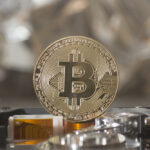For those who jumped aboard the Bitcoin bandwagon earlier this year, news of China’s crackdown on cryptocurrencies has come as a serious blow. The buying frenzy during the spring ignited the digital currency, sending all crypto to record highs.
The BIS is often referred to as “The Central Bank for Central Banks.” It reported, that from all appearances, the worries of holders of digital currencies are far from over.
The Bank for International Settlements (BIS), owned by the U.S. Federal Reserve, the Bank of Canada, and others, hinted that it might yet challenge crypto, declaring that it works against the public good rather than for it.
Those who have been holding crypto for some time are thrilled as they are still “in the money.” However, there must be a buyer for every sale. Those who bought into Bitcoin near or at its peak of $63,000 have now lost more than half their investment as the crypto has tanked, falling below $30,000.
Bitcoin owners are not the only ones suffering. Dogecoin, which was a joke to begin with, suffered even worse in percentage terms.
Sales Become Forced as Markets Collapse
For those investors who purchased Bitcoin on margin, the damage was even worse. Investors who borrowed from a broker to invest are required by such lenders to pay a portion of their debt if their stake falls below a specific level. These investors are forced into selling something they bought high, into a falling market. The only other solution for such investors is to cover the loans they made with new money.
Margin calls helped to precipitate the crash of 1929. Margin calls have also accentuated the volatility of the unregulated crypto market. Some crypto traders in Asia borrowed are 100 to 1 ratios. This simply means that for every dollar of one’s own money invested, it is possible to purchase $100 worth of securities. This leverage is great when the markets are going up, but investors stand to lose their shirt as the market dives.
The Digital Alternative
Although Bitcoin may be down, it is far from being out. After dropping to almost $29,000, it has bounced back to almost $32,000 as of Friday.
Early in June, the government of El Salvador, which uses the US dollar as its currency, declared cryptocurrency to be legal tender. Upon passing of the legislation, Nayib Bukele, the country’s President announced the government will guarantee the convertibility to the precise number of dollars at the moment the transaction takes place.
Unfortunately, the announcement by the President came at the same time as the price of Bitcoin plunged. As a unit of exchange, this volatility has always been a problem with any crypto, including Bitcoin.
Cutting Out the Middle Man
The report issued by the BIS concluded that cryptocurrencies and stablecoins tend to work against the public good. CBDCs (Central Bank Digital Currency), on the other hand, have many of crypto’s advantages without any of the disadvantages. Unlike crypto, where the price is unpredictable, the value of a CBDC is well known, and unlike crypto, CBDCs can be spent anywhere.
CBDCs also eliminate the need for an intermediary when money is transferred. CBDCs allow one to pay someone for goods or services rendered through the use of a smartphone rather than cash. A CBDC is a claim on the central bank. The payment is certain, the payment is final, the payment is done without the need for an intermediary.
CBDCs are also a valid way to protect personal privacy, while at the same time, maintaining the integrity of the payment system.
Not Everyone is Keen
Not everyone involved with Bitcoin is keen on CBDCs and may not see integrity and payment certainty as advantages. Digital tokens, and there are many, do not create or produce anything of value. The money invested in digital speculation does not depend on the stability of price but rather on the idea that there is no limit and that the crypto will maintain an ever-increasing upwards movement.
Crushing crypto is not going to be easy. If central banks around the world hope to maintain their exclusive power over their local currency, they may be forced to develop and offer a functional alternative.
WeInvests is a financial portal-based research agency. We do our utmost best to offer reliable and unbiased information about crypto, finance, trading and stocks. However, we do not offer financial advice and users should always carry out their own research.
Read More













